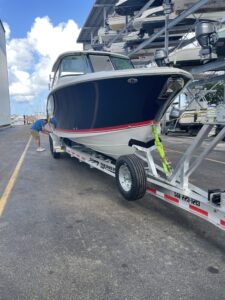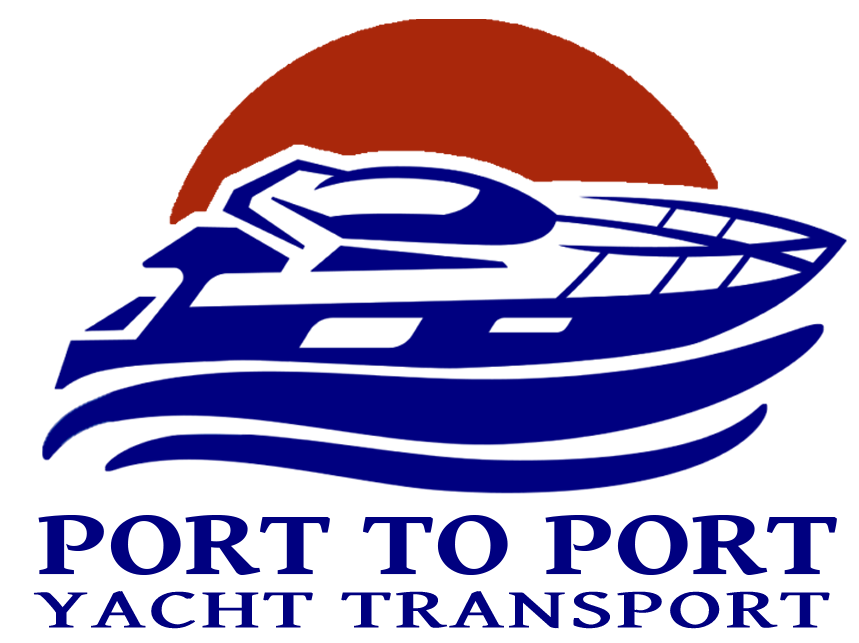 Navigating Gales when it comes to transporting your cherished boat across the highways and byways, meticulous preparation is key. In the face of powerful transport winds on land, meticulous preparation is your most valuable asset. By adhering to these quick pointers, you can fortify your vessel and ensure it can withstand the challenges of land transport in winds ranging from 60 to 75 mph. With safety and preparation as your guiding principles, you’ll navigate gale winds on the highways and byways of boat transport with confidence. 1. Here’s Discover Boating checklist
Navigating Gales when it comes to transporting your cherished boat across the highways and byways, meticulous preparation is key. In the face of powerful transport winds on land, meticulous preparation is your most valuable asset. By adhering to these quick pointers, you can fortify your vessel and ensure it can withstand the challenges of land transport in winds ranging from 60 to 75 mph. With safety and preparation as your guiding principles, you’ll navigate gale winds on the highways and byways of boat transport with confidence. 1. Here’s Discover Boating checklist
Navigating Gales When Transporting
1. Prioritize Safety: Always put safety first. If the weather report signals extreme winds, consider delaying the transport until conditions improve. Your safety and the safety of others on the road are paramount.
2. Secure Loose Items: Navigating Gales means you will need to remove or securely fasten any loose items on your boat. This includes sails, cushions, equipment, and personal belongings. Strong winds can easily turn unsecured items into potential projectiles, causing damage to your boat and posing hazards to others on the road.
3. Stow It Away: Navigating Gales also means you will need to Ensure all hatches, doors, and windows are firmly closed and locked. This safeguards against wind-driven rain or water entering the vessel, potentially causing damage during transit.
4. Minimize Wind Resistance: When Navigating Gales when transporting you will need to lower or remove antennas, radar, and any other protruding equipment that can create wind resistance. Retract or securely fasten features like awnings, Bimini tops, and fishing gear. Reducing wind resistance helps maintain your boat’s stability on the trailer.
5. Rigging Check: If applicable, perform a thorough inspection of your boat’s rigging. Confirm that masts are well-secured, and all stays and shrouds are appropriately tightened. A well-prepared rigging system can withstand the forces exerted by strong winds more effectively, but why risk the loss when navigating gales when transporting we recommend putting the riggings away.
6. Manage Weight: Maintain fuel tanks and water tanks at least partially full. This additional weight can enhance your boat’s stability during land transport and counterbalance the effects of high winds while navigating gales when we are transporting the vessel.
7. Disconnect Batteries: Prevent electrical system drainage and reduce the risk of electrical issues by disconnecting your boat’s batteries before transport.
8. Empty Water Tanks: Drain any water tanks to decrease your boat’s overall weight, particularly if your vessel has a higher profile that may be susceptible when navigating gales on land.
9. Secure or Remove Lines: Ensure all lines, ropes, and cables are properly secured to prevent entanglements and safety hazards. If feasible, consider removing lines that are not essential for the transport journey.
10. Stay in Touch: Maintain open communication with your chosen boat transport company. Share any concerns you may have regarding weather conditions, and seek their advice and recommendations to ensure a safe and smooth journey on the road.
11. Insurance Coverage: Double-check your boat’s insurance coverage with your agent. Confirm that your vessel is adequately insured for land transport and any potential weather-related incidents that may arise during the journey.
12. Check Tension on the tie downs. Port to Port will periodically stop during your journey to check the tension of the securing straps and tie-downs. Make any necessary adjustments to ensure the vessel remains secure.
13.Notify Authorities: In some cases, you may need to notify local authorities or law enforcement about your oversized load and travel plans.
14. Drive Safely: Drive with extra caution when transporting a vessel. Keep a safe following distance from other vehicles and be prepared for longer braking distances.
15. Follow Local Laws: Adhere to all traffic laws and regulations, including any specific rules for oversized loads.
Port-Port.Com prioritizes safety when transporting a vessel over land. We hire only experienced CDL drivers with 5 years or more experience in boat transport. If you’re not experienced in handling such transports, consider hiring a professional transport , like Port-Port.Com with the expertise and equipment necessary for the job.
